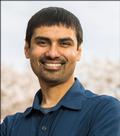Cited By
View all- Sousa AMarques-Neves CVieira P(2024)Development of a Smartphone-Based System for Intrinsically Photosensitive Retinal Ganglion Cells Targeted Chromatic PupillometryBioengineering10.3390/bioengineering1103026711:3(267)Online publication date: 9-Mar-2024
- Adhikary RSadeh MBatra NGoel M(2024)JoulesEyeProceedings of the ACM on Interactive, Mobile, Wearable and Ubiquitous Technologies10.1145/36314227:4(1-29)Online publication date: 12-Jan-2024
- Islam RBae S(2024)PupilSense: Detection of Depressive Episodes through Pupillary Response in the Wild2024 International Conference on Activity and Behavior Computing (ABC)10.1109/ABC61795.2024.10652166(01-13)Online publication date: 29-May-2024
- Show More Cited By



